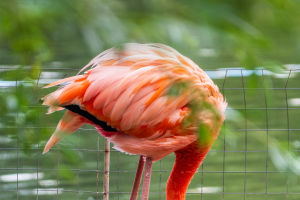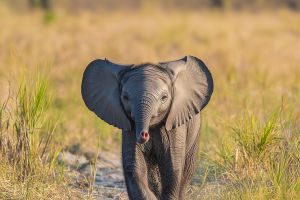Meerkats are small, adorable creatures that have captured the fascination of people worldwide. Known for their upright posture and curious nature, these animals live in complex social groups that are a marvel to observe.
In this article, we’ll explore the life of meerkats, their social behavior, and what makes them such interesting animals to study.
A Close Look at Meerkats
Meerkats are members of the mongoose family and are found mainly in southern Africa. These animals are relatively small, measuring around 25-35 cm (10-14 inches) in height, with a long, slender body and a bushy tail. They have a distinctive look with large eyes and pointed ears, and their fur is usually a mix of gray and brown, helping them blend into the desert environment they call home.
Meerkats are highly social animals, living in groups known as "mobs." These groups typically consist of 20 to 30 members, but larger mobs can sometimes form in ideal environments. Within these mobs, each meerkat has a specific role, which helps maintain the structure of their society.
Social Structure: The Heart of Their Community
One of the most fascinating aspects of meerkats is their social structure. Meerkats live in a matriarchal society, where the dominant female leads the group. She is typically the one who decides where the mob will go and ensures the safety of the group. The dominant female is also the primary breeder, with her offspring often becoming the future leaders of the group.
Each mob has a clear division of labor. Some meerkats are tasked with foraging for food, while others act as sentries, keeping watch for predators. The sentry’s job is crucial because they alert the group to the presence of any threats, such as birds of prey or large carnivores. This system allows the group to work together efficiently, increasing their chances of survival in the harsh environment.
Communication: The Key to Their Success
Meerkats are excellent communicators. They use a wide range of vocalizations to convey messages to each other, including alarm calls to warn of danger, chirps to signal for attention, and low growls to show aggression. In addition to vocalizations, they also communicate through body language, such as tail flicks or standing tall on their hind legs to get a better view of their surroundings.
One of the most remarkable behaviors is the “sentry” standing on their hind legs to keep an eye out for danger. While the rest of the group goes about their daily activities, the sentry stands alert, constantly scanning the sky and the ground for any signs of predators. This vigilance ensures that the group has time to take cover if necessary, increasing their chances of survival.
Foraging and Diet
Meerkats are omnivores, and their diet is diverse, ranging from insects to small reptiles and fruits. They are particularly skilled at hunting insects, and their sharp claws and keen sense of smell make them excellent diggers. Meerkats often hunt for insects like beetles, termites, and ants, but they are also known to eat small birds, eggs, and even scorpions, which they are able to handle due to their thick fur and natural resistance to venom.
Meerkats will forage together, sharing food with one another, which strengthens their social bonds. This behavior also ties back to their cooperative nature, where each member of the group contributes to the survival of the whole.
Reproduction and Family Life
Reproduction in meerkats is an important event in the life of the group. The dominant female typically mates with the dominant male, and they raise the young together. However, it is not uncommon for other females in the group to assist in caring for the offspring, helping to feed and protect them. This communal care is another example of their cooperative nature, where everyone pitches in to ensure the survival of the young.
A female meerkat gives birth to between two and five pups after a gestation period of about 11 weeks. The pups are born blind and helpless but quickly grow under the care of the group. After a few weeks, the young meerkats begin to venture out of the burrow, learning how to forage and communicate with the group.
The Importance of the Burrow
Meerkats live in burrows that they dig themselves. These burrows are an essential part of their survival, providing shelter from the intense heat of the day and protection from predators at night. The burrows are often complex, with multiple chambers connected by tunnels. Meerkats take great care in maintaining their burrows, ensuring they are safe and well-kept.
At the end of the day, the entire mob retreats into the burrow for the night. The burrow acts as a safe haven where the meerkats can rest and sleep without the threat of predators.
The Remarkable World of Meerkats
Meerkats are truly remarkable creatures, with fascinating social structures, communication skills, and survival strategies. Their cooperative nature and highly organized communities are a testament to the strength that comes from working together. Whether it's their sentry duty, foraging habits, or family bonds, meerkats offer a glimpse into the wonders of the animal kingdom. So, the next time you spot a meerkat standing tall, remember that there’s a lot more happening beneath that adorable exterior!
What's it Like to be a Meerkat? | Animals With Cameras | BBC Earth
Video by BBC Earth


